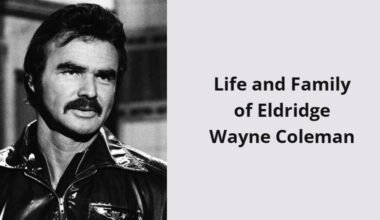In 11th-century England, Leofwine Godwinson was best remembered for being King Harold II’s younger brother and participating in the Battle of Hastings in 1066. He had titles and territories that strengthened the Godwin family before the Norman Conquest changed England.
Early Life and Background
Leofwine Godwinson was born into a wealthy English family around 1035. The fifth son of Godwin, Earl of Wessex, and Gytha Thorkelsdóttir. The Godwin family was politically powerful, and Leofwine’s upbringing was marked by ambition and power battles typical of noble families.
| Detail | Information |
|---|---|
| Birth Year | c. 1035 |
| Parents | Godwin, Earl of Wessex & Gytha Thorkelsdóttir |
| Family Status | Member of the House of Godwin |
Titles and Responsibilities
Leofwine became Earl of Kent for his military and leadership skills. His duties included administering his earldom’s holdings and military affairs, helping defend and govern England during a volatile time.
| Title | Date Granted | Jurisdiction |
|---|---|---|
| Earl of Kent | c. 1055-1057 | Kent |
| Earl of Essex | c. 1055-1057 | Essex |
Family Dynamics
The Godwin family had many siblings who were important in English history. Leofwine’s brothers Harold and Gyrth also achieved success. Family loyalties and goals were evident throughout the Norman invasion.
| Family Member | Relation | Significance |
|---|---|---|
| Harold Godwinson | Brother | King of England; led forces at the Battle of Hastings |
| Gyrth Godwinson | Brother | Earl who fought alongside Leofwine at Hastings |
| Tostig Godwinson | Brother | Earl of Northumbria; involved in conflicts against Harold II |

Exile and Return
Political maneuvering and disagreements with King Edward the Confessor drove the Godwin family to exile in 1051. Leofwine and Harold fled to Ireland, where Diarmait mac Máel na mBó, King of Leinster, protected them. Their resilience and political skill were shown when they successfully reclaimed their titles and lands in England.
| Event | Year | Description |
|---|---|---|
| Exile | 1051 | Forced out of England due to political conflict |
| Return | 1052 | Successfully negotiated return to England |
Role in the Battle of Hastings
The Battle of Hastings on October 14, 1066, was Leofwine’s highlight. He heroically battled alongside his brothers but fell to William the Conqueror’s Norman soldiers. English history changed after the conflict ended Anglo-Saxon control.
| Event | Date | Outcome |
|---|---|---|
| Battle of Hastings | October 14, 1066 | Death of Leofwine and his brothers; Norman victory |
Legacy and Historical Impact
Leofwine Godwinson’s legacy is tied to Anglo-Saxon nobility after the Norman Conquest. The family’s prominence in the 11th century remains a focus of historical study on the transition from Anglo-Saxon to Norman authority, even though their power declined after their deaths.
| Legacy Aspect | Details |
|---|---|
| Historical Significance | Exemplifies the power struggles of Anglo-Saxon nobility |
| Cultural Impact | Represents the resistance against Norman invasion and the final stand of the Anglo-Saxon elite |
FAQ
Who was Leofwine Godwinson?
The younger brother of Harold II, King of England, Leofwine Godwinson led the Anglo-Saxon resistance to the Normans.
What roles did Leofwine hold?
Leofwine led the military and managed land as Earl of Kent and Essex.
How did Leofwine die?
At the Battle of Hastings, Leofwine and his brothers died, changing English history.
Why was the Godwin family important?
One of England’s most powerful noble families, the Godwins shaped politics and society.
What were the family dynamics like?
The Godwin family was loyal and ambitious, with numerous siblings serving in England’s military and governance.
Which followed the Battle of Hastings?
After the fight, the Norman Conquest redistributed authority and lands, reducing the power of the Anglo-Saxon nobility, including the Godwins.






